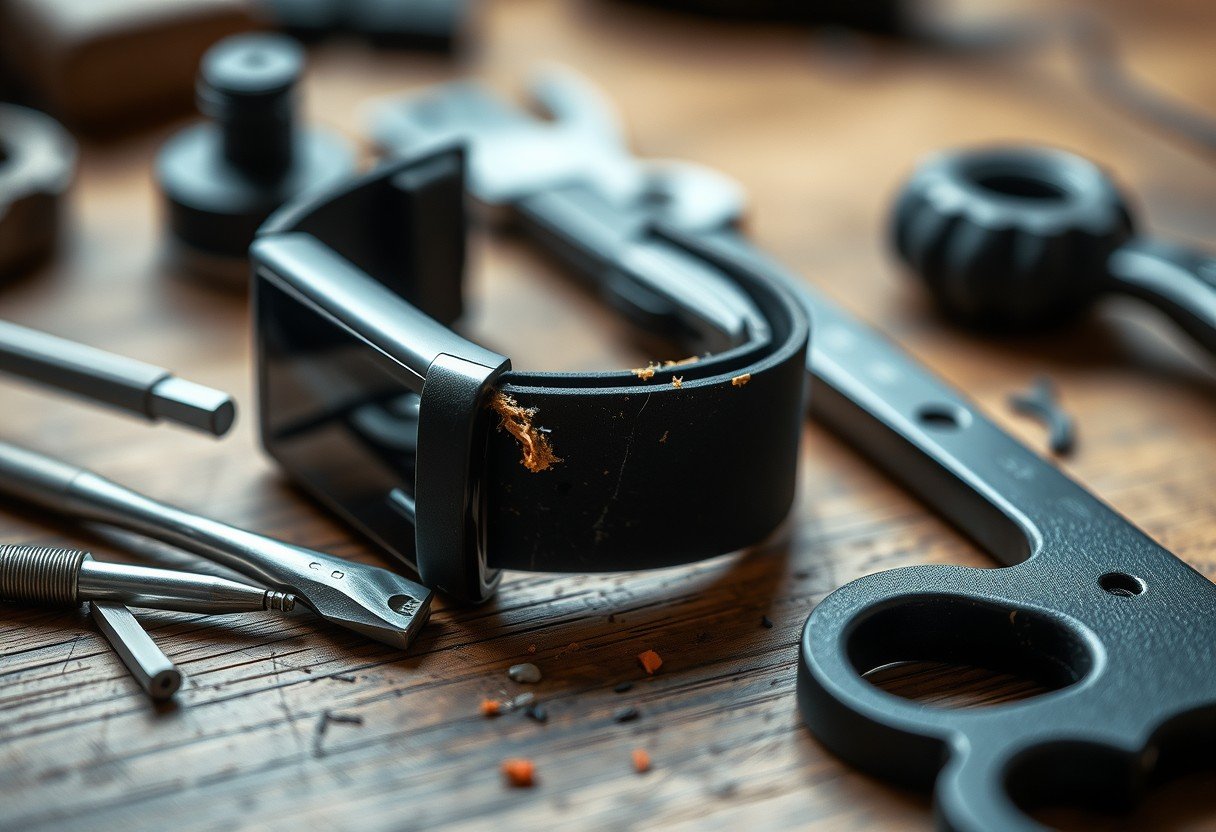Over time, your Fitbit band can run into problems that affect comfort and usability. From simple wear and tear to straps that just won’t fit right, these issues can interrupt your fitness tracking. Understanding why these problems happen is the first step to fixing them. This guide explains the most common Fitbit band strap issues and provides simple, practical solutions to help you keep your device working perfectly on your wrist, ensuring your health journey continues without a hitch.
Understanding Common Wear and Tear on Your Fitbit Band
Just like your favorite pair of shoes, your Fitbit band is subject to daily wear and tear. Constant use can cause the material to fray, crack, or even change color over time. This not only makes your Fitbit look worn out but can also impact its function and comfort.
Regularly inspecting your band is key to catching these issues early. Look for small cracks near the connection points or any signs of thinning material. Sweat, sun exposure, and friction are the main culprits behind this degradation, especially for silicone and leather bands.
Another related issue is compatibility. When you need a replacement, it’s crucial to know that not all bands fit every Fitbit model. Using a band designed for a different device can lead to a poor fit, creating annoying gaps or misalignments that affect heart rate tracking and overall comfort.
How to Get the Perfect Fit and Sizing for Your Strap
Getting the right fit for your Fitbit band is more important than you might think. A band that is too tight can cause skin irritation and discomfort, while a band that is too loose can slide around, leading to inaccurate heart rate readings and a risk of the device falling off during activity.
Finding that perfect fit starts with knowing your wrist size. Before buying a new band, measure your wrist with a flexible tape measure. Most manufacturers provide a sizing guide to help you choose the correct option, whether it’s small, large, or a one-size-fits-all adjustable band.
Some users find adjusting the strap length to be tricky. Depending on your band, you might have a classic buckle, a sliding mechanism, or a pin-and-tuck closure. If you’re struggling, consult the instructions for your specific band type. Taking a moment to experiment with the adjustment features will lead to a much better fit and a more enjoyable user experience.
Dealing with Skin Irritation from Band Materials
The material of your Fitbit band has a huge impact on your comfort, especially if you have sensitive skin. Many users report redness, itching, or rashes caused by the materials used in their straps. Common irritants can include synthetic materials, dyes, or even metals like nickel found in some clasps.
If you start to notice skin irritation, the first step is to take the device off and clean both your skin and the band thoroughly. If the problem persists, it’s a clear sign you should switch to a different material.
When choosing a new band, consider these options:
- Silicone: Often hypoallergenic, flexible, and water-resistant, making it great for workouts.
- Nylon or Fabric: Very breathable and lightweight, which can reduce sweat buildup and irritation.
- Leather: Stylish but less suitable for intense exercise as it can absorb sweat and requires more care.
Choosing a band material that suits your lifestyle and skin sensitivity is crucial for long-term comfort. Durability also varies, with silicone and nylon generally holding up better to active use than leather or cloth bands.
Why Your Fitbit Clasp Might be Failing and How to Fix It
A secure clasp is essential for keeping your Fitbit on your wrist. Over time, the closure mechanism can wear out, becoming difficult to fasten or popping open unexpectedly. This is a common failure point that can put your device at risk of being lost or damaged.
Different Fitbit bands use various clasp types, and each has potential weaknesses. Understanding these can help you choose a band that suits your activity level or troubleshoot your current one.
| Clasp Type | Common Limitations |
|---|---|
| Pin and Tuck | Can become loose or pop out over time. |
| Buckle | The tongue may slip if not fitted correctly. |
| Magnetic | Can detach during strong or sudden movements. |
| Snap Closure | The snaps can wear down and fail to lock. |
If your clasp is faulty, you don’t always need a new band right away. For a loose pin-and-tuck closure, sometimes a small band holder or loop can add extra security. However, if the mechanism is broken or worn down, the safest option is to invest in a replacement band to avoid losing your Fitbit.
Choosing Between Official and Third-Party Replacement Straps
When it’s time to replace your band, you’ll face a key decision: buy an official strap from Fitbit or opt for a third-party one from another retailer. Official straps are guaranteed to fit perfectly and are usually made of high-quality materials, but they come at a premium price.
Third-party straps, on the other hand, offer a huge variety of styles, colors, and materials at much lower prices. This can be a great way to customize your look without breaking the bank. However, the quality can be inconsistent.
While the low cost of a third-party band is tempting, consider the potential hidden costs. A cheaper band might wear out faster, have a less secure clasp, or be made from materials that irritate your skin, meaning you’ll have to replace it more often. Sometimes, investing in a durable official strap can save you money and hassle in the long run.
Simple Maintenance Tips to Make Your Fitbit Band Last Longer
Once you have a band you love, proper care can significantly extend its life. A few simple habits can prevent many of the common problems like discoloration, material degradation, and unpleasant odors.
Proactive maintenance ensures your band stays comfortable and functional for as long as possible. Clean your strap regularly, especially after workouts, using mild soap and water. Avoid harsh chemicals or abrasive cleaners, as they can damage the material. Always make sure the band is completely dry before you put it back on to prevent moisture damage and skin irritation.
Proper storage also makes a difference. When you’re not wearing your Fitbit, keep the band in a cool, dry place away from direct sunlight, which can cause colors to fade. Avoid placing heavy objects on it that could permanently bend or deform the strap.
Frequently Asked Questions about Fitbit Band Strap Problems
What are the most common Fitbit band problems?
The most frequent issues include general wear and tear like cracking or fraying, clasps that won’t stay secure, skin irritation caused by band materials, and difficulty getting a proper fit on the wrist.
How do I stop my Fitbit band from irritating my skin?
First, clean the band and your wrist regularly. If irritation continues, switch to a hypoallergenic band made from a different material, such as fabric, nylon, or medical-grade silicone. Giving your wrist a break from the device each day can also help.
Can I fix a Fitbit clasp that won’t stay closed?
For minor issues, you can try cleaning the clasp mechanism to remove debris. Some users add a small, clear rubber band for extra security as a temporary fix. However, if the clasp is broken, it is safest to replace the entire strap.
Are third-party Fitbit bands any good?
Third-party bands can be a great, affordable option with more style choices. However, quality can vary greatly, so it’s important to read reviews to check for durability, fit, and material comfort before buying.
How often should I clean my Fitbit strap?
It’s a good practice to clean your band at least once a week with mild soap and water. If you exercise or sweat heavily, you should rinse and dry it after each workout to prevent buildup and odors.
When is it time to get a new Fitbit band?
You should replace your band if you see visible cracks or tears, if the material has become overly stretched or stiff, or if the clasp no longer fastens securely. Persistent skin irritation is also a clear sign that it’s time for a change.




Leave a Comment